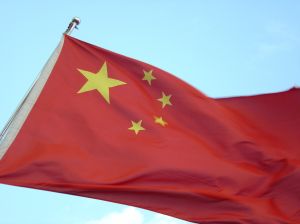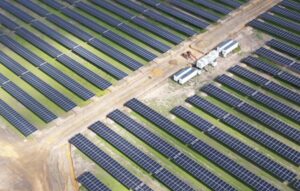The recent visit by Minister Combet drew attention to China’s announcement of carbon trading pilots and the potential to create a competitively neutral Asia Pacific trading system involving China, Australia Korea, New Zealand, California and parts of Canada.
While details are still thin, Sandbag’s report ‘Turning the Tanker’ (www.sandbag.org.uk), provides some useful insights into the nature and timing of China’s carbon policy. According to Sandbag, China is conducting a series of pilots that will trial a range of penalty and reward mechanisms carefully selected to examine which work best at different stages of economic development. The trials will operate until the end of 2015, after which China is expected to select the best model(s) to roll out nationally – and potentially internationally – from 2016 or later.
Compare China’s flexible approach with Australia’s locked-in commitments: an emissions rights market (the Carbon Pricing Mechanism) with a managed price path from 1st July for three years, followed by a floating price with a floor; the Carbon Farming Initiative, rewarding carbon storage and reduction activities in the land sector; and a $10billion Clean Energy Finance Corporation to invest tax payer funds in clean and renewable technologies.
Theoretically, trading emissions rights monetises the environmental externality and allocates this cost to ‘big polluters’, opening the way for competition from lower carbon intensity solutions. However, international evidence indicates that rewarding “good behaviour” through abatement credits is more effective than penalising “bad behaviour” through selling emissions rights. This is demonstrated by two examples: the European Trading Scheme, which has delivered only 30 million tonnes of carbon savings over the entire seven years it has been operating, or less than 0.3% of covered emissions; and the Clean Development Mechanism which rewards emissions abatement and at 1 billion tonnes is the largest and cheapest carbon market in the world. China alone has created 500 million tonnes of credits through the CDM so far.
The effectiveness of Australia’s emissions rights model – the Carbon Pricing Mechanism – is at risk to imperfect competition, unintended impacts and international markets:
• Imperfect competition in electricity generation means that permit costs will be passed to consumers in full, at values up to $60 per tonne.
• “Big polluters” are not the only ones to be penalised – the charge on natural gas represents an unavoidable levy that applies equally to individuals, public hospitals who generate their own heat and power and some of the most efficient manufacturing plants in the world.
• Treasury modeling indicates that Australia will rely on up to 100 million tonnes of cheap CDM credits for two thirds of its 2020 emissions target. However, the availability and additionality of credits from China may be affected by its carbon trials, thereby driving up the price.
Without an internationally agreed approach and exacerbated by a high exchange rate, permit schemes like the Carbon Pricing Mechanism and the ETS represent the worst of all possible worlds. Reduce the charge and abatement activities decline. Keep the charge and emissions are exported overseas to countries without an equivalent scheme.
The CFI reward mechanism is a welcome step which creates genuine opportunities and potentially, some relief from the impact which the Carbon Tax will have on agricultural inputs.
On the other hand, the CEFC is largely a victim of the Expert Panel’s Terms of Reference, which constrained it to identifying ways to provide investment capital. While the review indicated that it could take some exposure to power prices and potentially invest in power network extensions, the CEFC is fundamentally a variant of discredited green loans schemes, albeit with a forensic focus on governance.
Equally concerning, the Expert Panel considered wind farm investment within scope. The Large Scale Generation Certificate price is designed to promote wind farms as the least cost renewable technology currently available, at around $100 to $120 per MWh. Ergo, if wind farm take-up is below expectations, it is likely that issues other than access to capital, such as vertical integration, are to blame.
Had the CEFC been cast as the manager of the Commonwealth’s carbon position, it could have sidestepped the default risk on tax payer funds. Seen as a domestically-focused “mini CDM”, it could have signed long term contracts for abatement credits at a price determined by the market and payable on delivery. Private capital would inevitably flow. $10 billion could buy a shipload of credits – a monopoly buyer might even get them for a cheap price.
China’s flexible strategic game plan contrasts with Australia’s rigid, ideological approach. If we are to be the clever country in carbon terms, it’s time for a rethink, however painful that might be in the immediate future.
Stuart Allinson is a Director with Exigency Management an energy and carbon advisory firm. He and co-founder Adrian Palmer are members of the Coalition’s Business Advisory Council on Climate Policy.








